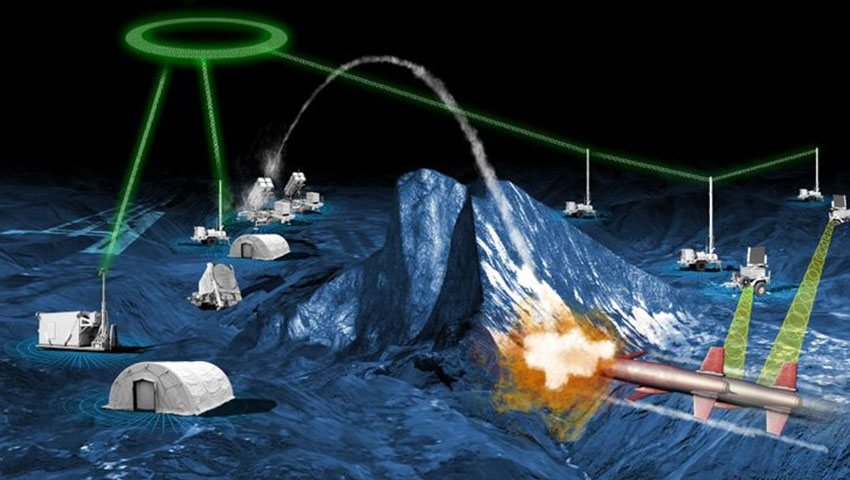Northrop Grumman and European missile specialist MBDA have successfully completed a joint, company-funded effort to incorporate the Common Anti-air Modular Missile (CAMM) family into the Northrop Grumman-designed multi-domain Integrated Air and Missile Defence Battle Command System (IBCS).
To continue reading the rest of this article, please log in.
Create free account to get unlimited news articles and more!
As Australia continues to explore options for its own integrated air and missile defence (IAMD) and multi-domain joint battle management system as part of the $1 billion-plus AIR 6500 program, the successful joint-integration by Northrop Grumman and MBDA marks a major milestone for both companies while also establishing the integration and interoperability credentials of Northrop's offering, as CAMM became non-US missile system to be successfully integrated with the IBCS system.
Bill Lamb, director of international battle management at Northrop Grumman, described the importance of the integration milestone: "This is another demonstration of the 'any-sensor, any-shooter' IBCS design that integrates weapons in a short time and at a small fraction of traditional costs. With IBCS as the enabler for next-generation IAMD in the multi-domain battlespace, warfighters gain the advantage of leveraging any available sensors and effectors to counter evolving and emerging threats."
Following approval by both the US Department of Defence and UK Ministry of Defence, Northrop Grumman and MBDA invested internal company funds to demonstrate the integration of the Northrop Grumman-developed IBCS with the MBDA CAMM family of missiles in an affordable and rapid manner.
As part of the successful integration, the companies completed functional integration of the end-to-end firing chain for an integrated fire control and fire direction configurations between CAMM and IBCS, the effort accomplished all research and development goals identified at the onset of the program for integrating CAMM into the IBCS and served to reduce risk and costs for full systems integration.
"This integration further demonstrates how the CAMM family and its associated systems have been designed from the outset for integration into IAMD networks, including with third-party battle management command and control and sensors, allowing the most complex engagement scenarios to be achieved with lower demands on the network and a lower integration burden," said Michael Mew, ground based air defence program head, MBDA.
The CAMM family is the next generation of air defence missiles for multi-domain applications. Designed to defeat the most challenging of modern and future threats, including saturation attacks by precision-guided munitions and manoeuvring high-speed missiles attacking simultaneously from multiple directions, the CAMM family of missiles feature a solid-state active radar seeker, two way data-link, low-signature rocket motor and a 360-degree soft-vertical launch system.
Northrop Grumman's IBCS creates what the company calls a 'paradigm shift' by replacing legacy stove-piped systems with a next-generation, net-centric approach to better address the evolving complex threat. The system integrates disparate radars and weapons to construct a far more effective IAMD enterprise.
IBCS delivers a single integrated air picture with unprecedented accuracy and broadens surveillance and protection areas, IBCS is characterised by its truly open systems architecture, allowing incorporation of current and future sensors and effectors and interoperability with joint C2 and the ballistic missile defence system.
The AIR 6500 Project presents an opportunity for Australian industry to participate in an exciting and strategically important program to build and maintain an enduring and regionally superior Australian capability with an opportunity to enter export markets.
The ADF's existing air defence systems will be upgraded or replaced by Project AIR 6500. This investment will provide the foundation for an enhanced IAMD system for the ADF, ensuring that the delivered system is able to fuse and share information to enhance the accuracy and speed of ADF's systems response to air and missile threats. The delivered architecture will have the flexibility for further enhancement to handle more complex threats and to integrate new technologies as they emerge.
The ADF will also acquire ground-based active electronically scanned array radars from around 2020 and expand Australia's access to air and space situational awareness information, including through space-based systems. A solicitation to industry is expected in 2019. Contract signature for the successful prime systems integrator and system deliverer will be in 2020 with an initial capability fielded by 2024.
With more than 90 armed forces customers worldwide, MBDA is a world leader in missiles and missile systems. In total, the group offers a range of 45 missile systems and countermeasures products already in operational service and more than 15 others currently in development. MBDA is jointly owned by Airbus (37.5 per cent), BAE Systems (37.5 per cent), and Leonardo (25 per cent).
Northrop Grumman is a leading global security company providing innovative systems, products and solutions in autonomous systems, cyber, C4ISR, space, strike, and logistics and modernisation to customers worldwide.

 Login
Login







